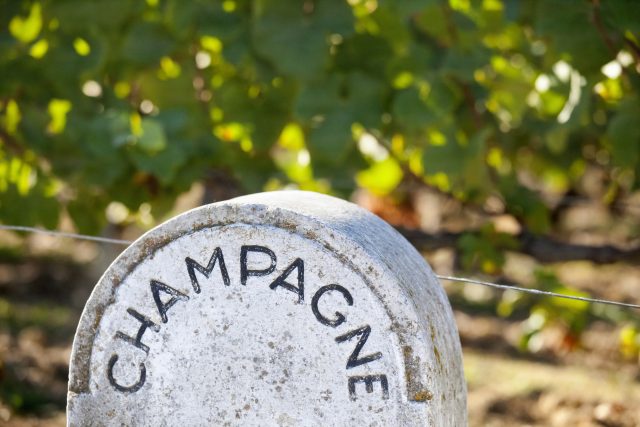This website uses cookies so that we can provide you with the best user experience possible. Cookie information is stored in your browser and performs functions such as recognising you when you return to our website and helping our team to understand which sections of the website you find most interesting and useful.
Champagne yields to drop in 2023 as sales decline
The region of Champagne has capped yields for its impending harvest at a slightly lower level than last year, as sales of the French fizz fall by almost 4% in the first half of 2023.

According to the Comité Champagne, which regulates the supply of grapes in the appellation, the number of berries that can be harvested for making into fizz from this year’s harvest is to be limited to 11,400kg/ha, which is roughly equivalent to almost 326 million bottles.
This is a drop of 5% on 2022, when yields were capped at 12,000kg/ha, producing around 343m bottles, which was more than the shipments in that year, which hit 326m bottles – the third highest total in Champagne’s history, representing a rise of almost 14% on 2021.
Indeed, the yield for this year’s harvest – which was agreed upon yesterday – brings Champagne in line with shipments in 2022. Nevertheless, the production is higher than the expected quantity for 2023, with total shipments for this year forecast to reach around 314m bottles, according to the Comité Champagne, which represents a decline of 3.7%.
However, the decrease in Champagne shipments for the first six months of 2023 is a touch greater than the year-end forecast. In a statement sent to the drinks business yesterday, the regional trade organisation recorded that Champagne shipments in the first half of 2023 were 125.8 million bottles, which was a decrease of 4.7% compared to the same period in 2022.
The fall-off was greatest in Champagne’s domestic market, with France seeing a decline of 6.3%, to total 48.1 million bottles, while exports, with 77.7 million bottles, are seeing a drop of 3.7%.
Commenting on the yields for the impending harvest, David Chatillon, who is co-president of the Comité Champagne, said that the chosen figure was a reflection of current worldwide economic challenges.
“To determine the available yield for the year, winegrowers and houses have agreed on shipping forecasts for the next four years that take into account both our confidence in the appellation, and a certain caution with regards to the global economic situation and the effects of inflation,” he said.
However, the number of grapes that can be picked from the harvest is greater than the 11,400kg/ha – which represents the ‘available’ or ‘commercialisable’ yield, or the maximum amount that can be made into wine for selling from this harvest.
Should the natural yield produce more berries, then growers can harvest them to go into a store of wine, known as a reserve, which can be used to help the Champenois should there be a shortfall of grapes in the future.
The amount that can be harvested from this year’s vintage to go into this store of wine is a further 4,100kg/ha, which represents the quantity of grapes above 11,400 kg/ha up to the maximum authorised by the regulation, which is 15,500 kg/ha.
However, a producer would only be allowed to use this full additional quantity as long as the reserve does not exceed 10,000kg/ha, which is a higher level than in the past, up from a previous cap of 8,000kg/ha.
This means that for the first time in 2023, a producer can hold almost an entire harvest’s worth of wine as a back-up.
Such a change to the reserve has been made in response to unpredictable weather events creating more variation in grape supply from one year to the next, as well as to compensate for the fact that overall yields in Champagne appear to be gradually declining, primarily due to ageing vineyards, but also because of a more widespread adoption of sustainable viticultural practices.
The increase in the maximum reserve this year comes on the back of changes to the system in 2022, which, as previously reported by db, were aimed at avoiding the peaks and troughs of supply and demand.
This year’s harvest is set to take place in the first 10 days of September, with the Comité Champagne commenting that the vineyards are “in a good and uniform sanitary state”.
It also recorded that “The wine-growing season has been fairly calm, with little frost damage (1.5% of the vineyard) and hail damage (0.3%),” while the trade body noted that “mildew and powdery mildew are contained.”
While it said that “Grape clusters are in good shape”, it listed only one concern for growers, which are soil water levels, following an extended period of hot and dry weather.
Read more
Counting the cost: why producing Champagne is getting pricier
How sweeping reforms will help Champagne handle peaks and troughs in supply and demand
Related news
Grammy-winning Ariana Grande bewitched by Barolo

